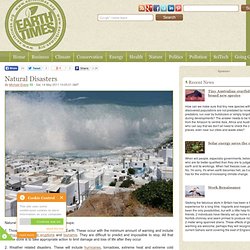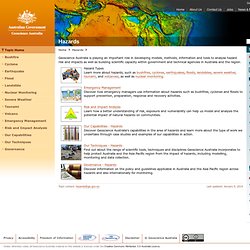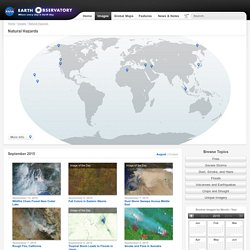

Natural and Man-Made Disasters in the Yahoo. Stop Disasters. EARTHFORCE. Natural Disasters. Teaching Resources - Natural Disasters. Natural Disasters Without Warning. As of July 1, 2013 ThinkQuest has been discontinued.

We would like to thank everyone for being a part of the ThinkQuest global community: Students - For your limitless creativity and innovation, which inspires us all. Teachers - For your passion in guiding students on their quest. Partners - For your unwavering support and evangelism. Parents - For supporting the use of technology not only as an instrument of learning, but as a means of creating knowledge. We encourage everyone to continue to “Think, Create and Collaborate,” unleashing the power of technology to teach, share, and inspire. Best wishes, The Oracle Education Foundation. Avalanche! Welcome to the companion Web site to "Avalanche!

," originally broadcast on November 25, 1997. In this program, scientists on a quest to find out how snow can sometimes strike with the force of TNT take NOVA's cameras inside an avalanche to unlock its deadly secrets. Photo: David Ruddick Text Avalanche! Home | Capturing | Making | Slide Snow Sense | Mail | Resources | Teacher's Guide | Transcript. Kids. Disasters. Savage Planet. SAVAGE PLANET airs Tuesdays, June 6 - June 27, 2000 at 8 pm (ET) on PBS (check local listings).

While planet Earth sustains life, it also harbors forces that can instantly destroy us. SAVAGE PLANET, a new, four-part series from Thirteen/WNET New York, examines the stunning beauty and deadly power of the Earth. Eyewitness accounts, scientific investigations, and unprecedented footage from around the world put viewers in the eye of the storm and on the trail of avalanches, meteors, lightning, and much more.
Savage Planet online features essays and interactive animations that highlight topics presented in the series; video clips; and links to relevant resources on the Web. The site is best viewed in Netscape 4.0, Internet Explorer 4.0, and AOL 4.0 or higher. Natural Disasters. Natural disasters fall into three broad groups: 1.

Those caused by movements of the Earth. These occur with the minimum amount of warning and include earthquakes, volcanic eruptions and tsunamis. They are difficult to predict and impossible to stop. All that can be done is to take appropriate action to limit damage and loss of life after they occur. 2. 3. Someone living in an area that is prone to one or other of these natural disasters will be well aware of the fact, so the most important factor is to be prepared. The first indication of an earthquake might be a roaring or rumbling sound that gradually grows louder. The strength of an earthquake is usually measured using the moment magnitude scale. If an earthquake occurs under the sea it can cause a tsunami. The tsunami that hit northeastern Japan following the 11 March earthquake was 15 metres high some areas and it travelled 10 km inland.
The volcanic ash is mainly pulverised rock. Tornadoes can also be a lethal weather event. Planet Earth. Database. Home. Hazards. Geoscience Australia is playing an important role in developing models, methods, information and tools to analyse hazard risk and impacts as well as building scientific capacity within government and technical agencies in Australia and the region.

Hazard Types Learn more about hazards, such as bushfires, cyclones, earthquakes, floods, landslides, severe weather, tsunami, and volcanoes, as well as nuclear monitoring. Emergency Management Discover how emergency managers use information about hazards such as bushfires, cyclones and floods to support prevention, preparation, response and recovery activities. Risk and Impact Analysis Learn how a better understanding of risk, exposure and vulnerability can help us model and analysis the potential impact of natural hazards on communities. Our Capabilities - Hazards Discover Geoscience Australia's capabilities in the area of hazards and learn more about the type of work we undertake through case studies and examples of our capabilities in action.
Natural Hazards. More Info September 9, 2015 Fall Colors in Eastern Siberia September 6, 2015 Tropical Storm Leads to Floods in Japan September 5, 2015 Smoke and Fires in Sumatra September 1, 2015 Dust Marches Across Iraq and Iran September 7, 2015 Dust Storm Sweeps Across Middle East.
